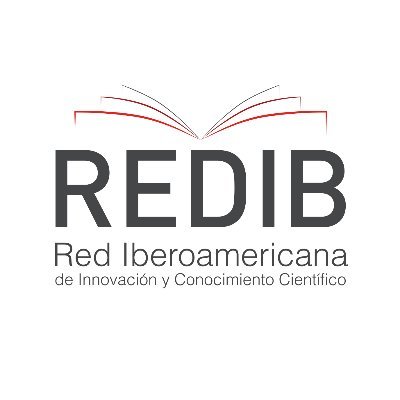Pets to therapy ! Therapists' attitudes towards incorporating pets into family assessment
Keywords:
attitudes, companion animal, family evaluation, pets, psychotherapy.Abstract
Companion animals have a strong presence in Western culture families. They are considered to be part of the family by 90% of them. However, the mental health field had practically ignored the human-animal connection in both clinical training and practice. In order to analyze how therapists consider pets in their clinical practice, a descriptive study was developed using an online form with a sociodemographic questionnaire and the Therapist Attitudes Scale Towards the Incorporation of Pets (EATHIM), built for this research (Cronbach's α .86). The sample population comprised 327 psychologists. The results obtained indicate that the age of the therapists and the number of years of professional practice is not related to the scale. The comparison of groups according to the modalities of care (family, couples, children) did not show differences in their EATHIM scores. Psychoanalytical counseling professionals obtained lower scores than the rest of them. Female therapists and those who considered pets important in personal life scored better on EATHIM. These results are discussed, highlighting the tendency of therapists to accept and consider pets as members of families with significant roles, but reject their concrete incorporation into clinical practice. The importance of implementing the links between humans and animals in professional training, so they are incorporated in clinical practice, is highlighted.
References
Albert, A., & Bulcroft, K. (1988). Pets, families, and the life course. Journal Of Marriage & Family, 50(2), 543-552. DOI: 10.2307/352019
Amiot, C. E., & Bastian, B. (2017). Solidarity with animals: Assessing a relevant dimension of social identification with animals. PloS one, 12(1), e0168184. DOI: 10.1371/journal.pone.0168184
AVMA [American Veterinary Medical Association]. (2018). Pet Ownership & Demographic (2017-18). Disponible en: https://www.avma.org/News/PressRoom/Pages/AVMA-releases-latest-stats-on-pet-ownership-and-veterinary-care.aspx
Cain, A. O. (1985). Pets as family members. Marriage & Family Review, 8(3-4), 5-10.
Ceberio, M. R. (1999). Ciencias modernas, complejidad y psicoterapia. En G. Nardone y P. Watzlawick (Eds.), Terapia breve, filosofía y arte (pp. 13-34). Barcelona: Herder.
Ceberio, M. R., & Díaz Videla, M. (en evaluación). Las mascotas en el genograma familiar.
Charles, N. (2014). ‘Animals just love you as you are’: experiencing kinship across the species barrier. Sociology, 48(4), 715-730. DOI: 10.1177/0038038513515353
Cohen, S. P. (2002). Can pets function as family members? Western Journal of Nursing Research, 24(6), 621-638. DOI: 10.1177/019394502320555386
Davis, L., Geikie, G., & Schamess, G., (1988). The Use of Genograms in a Group for Latency Age Children. International Journal of Group Psychotherapy, 38(2), 189-210. DOI: 10.1080/00207284.1988.11491097
Díaz Videla, M. (2015). El miembro no humano de la familia: las mascotas a través del ciclo vital familiar. Revista Ciencia Animal, 9, 83-98.
Díaz Videla, M. (2016). La relación humano-perro de compañía: Estudio descriptivo en Ciudad Autónoma de Buenos Aires. Tesis doctoral. Universidad de Flores. Ciudad Autónoma de Buenos Aires.
Díaz Videla, M. (2017). Antrozoología y la relación humano-perro. Buenos Aires: iRojo.
Díaz Videla, M., & Ceberio, M. R. (en prensa). Las mascotas en el sistema familiar. Legitimidad, formación y dinámicas de las familias humano-animal. Dossier: Familias Ultramodernas. Revista de Psicología de la Universidad Nacional de La Plata.
Díaz Videla, M., & Olarte, M. A. (2016). Animales de compañía, personalidad humana y los beneficios percibidos por los custodios. PSIENCIA, 8(2), 1-19. DOI: 10.5872/psiencia.v8i2.201
Díaz Videla, M., & Olarte, M. A. (2019). Diferencias de género en distintas dimensiones del vínculo humano-perro: Estudio descriptivo en ciudad autónoma de Buenos Aires. Revista Colombiana de Psicología, 28(2), 109-124. DOI: 10.15446/rcp.v28n2.72891
Dirección General de Estadística y Censos. [DGEyC]. (2016). Informe módulo de Tenencia responsable y sanidad de perros y gatos. Encuesta anual de hogares 2014. Ministerio de Hacienda, Ciudad Autónoma de Buenos Aires. Disponible en: https://www.estadisticaciudad.gob.ar
Faver, C. A., & Cavazos Jr., A. M. (2008). Love, safety, and companionship: The human-animal bond and latino families. Journal Of Family Social Work, 11(3), 254-271.
GfK. (2016). Pet Ownership. Global GfK Survey. Disponible en: https://www.gfk.com/fileadmin/user_upload/country_one_pager/AR/documents/Global-GfK-survey_Pet-Ownership_2016.pdf
Herman, D. (2018). Narratology beyond the human: Storytelling and animal life. New York: Oxford University Press.
Herzog, H. (2012). Los amamos, los odiamos y... los comemos: Esa relación tan especial con los animales. Barcelona: Kairós.
Hodgson, K., & Darling, M. (2011). Pets in the family: Practical approaches. Journal of the American Animal Hospital Association, 47(5), 299-305. DOI: 10.5326/JAAHA-MS-5695
Hodgson, K., Darling, M., Monavvari, A., & Freeman, D. (2018). Patient Education Tools: Using Pets to Empower Patients’ Self-care—A Pilot Study. Journal of Patient Experience, 2374373518809008, 1-5. DOI: 10.1177/2374373518809008
Johnson, A., & Bruneau, L. (2019). Pets and relationships: How animals help us understand ourselves and our connections with others. En L. Kogan & K. Blazina (Eds.), Clinician's Guide to Treating Companion Animal Issues (pp. 173-191). London: Academic Press. DOI: 10.1016/B978-0-12-812962-3.00011-3
Kellert, S. R. (1993). Attitudes, knowledge, and behavior toward wildlife among the industrial superpowers: United States, Japan, and Germany. Journal of social issues, 49(1), 53-69.
Marx, M. B., Stallones, L. B., Garrity, T. F., & Johnson, T. P. (1988). Demographics of pet ownership among US adults 21 to 64 years of age. Anthrozoös, 2(1), 33-37. DOI: 10.2752/089279389787058262
McGoldrick, M., Gerson, R., & Petry, S. (2008). Genograms: Assessment and intervention. New York: WW Norton & Company.
Minuchin, S., & Fischman, H. C. (2004). Técnicas de terapia familiar. Buenos Aires: Paidós.
Miura, A., Bradshaw, J. W., & Tanida, H. (2000). Attitudes towards dogs: A study of university students in Japan and the UK. Anthrozoös, 13(2), 80-88. DOI: 10.2752/089279300786999860
Parslow, R. A., Jorm, A. F., Christensen, H., Rodgers, B., & Jacomb, P. (2005). Pet ownership and health in older adults: Findings from a survey of 2,551 community-based Australians aged 60–64. Gerontology, 51(1), 40-47. DOI: 10.1159/000081433
Power, E. (2008). Furry families: making a human–dog family through home. Social & Cultural Geography, 9(5), 535-555. DOI: 10.1080/14649360802217790
Sanders, C. R. (2003). Actions speak louder than words: Close relationships between humans and nonhuman animals. Symbolic Interaction, 26(3), 405-426.
Serpell, J. A. (2011). Human-Dog relationships worldwide. Dog population Management, 15(2), 49-56.
Serpell, J., & Paul, E. (2011). Pets in the family: An evolutionary perspective. En C. A. Salmon, & T. K. Shackelford (Eds.) The Oxford handbook of evolutionary family psychology (pp. 298-309). Oxford University Press.
Sluzki, C. E. (1996). La red social: Frontera de la práctica sistémica. Barcelona: Gedisa.
Turner, W. G. (2005). The role of companion animals throughout the family life cycle. Journal Of Family Social Work, 9(4), 11-21. DOI: 10.1300/J039v09n04̱02
Walsh, F. (2009a). Human-animal bonds I: The relational significance of companion animals. Family Process, 48(4), 462-480.
Walsh, F. (2009b). Human-animal bonds II: The role of pets in family systems and family therapy. Family Process, 48(4), 481-499. DOI: 10.1111/j.1545-5300.2009.01297.x
Published
How to Cite
Issue
Section
The authors who publish in this journal accept the following conditions:
1. The authors retain the copyright and assign to the journal the right to first publication, with the work registered under the Creative Commons Attribution license, which allows third parties to use what has been published as long as they mention the authorship of the work and the first publication in this journal.
2. Authors may make other independent and additional contractual agreements for non-exclusive distribution of the version of the article published in this journal (e.g., inclusion in an institutional repository or publication in a book) provided that they clearly indicate that the work was first published in this journal.
3. Authors are permitted and encouraged to publish their work on the Internet (e.g., on institutional or personal pages) before and during the review and publication process, as this may lead to productive exchanges and greater and faster dissemination of published work (see The Effect of Open Access).









